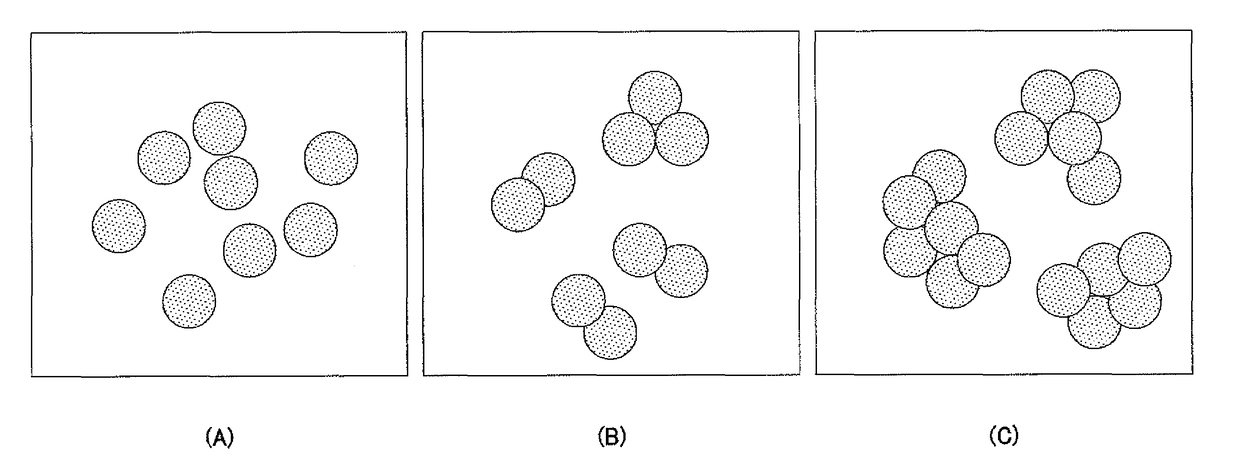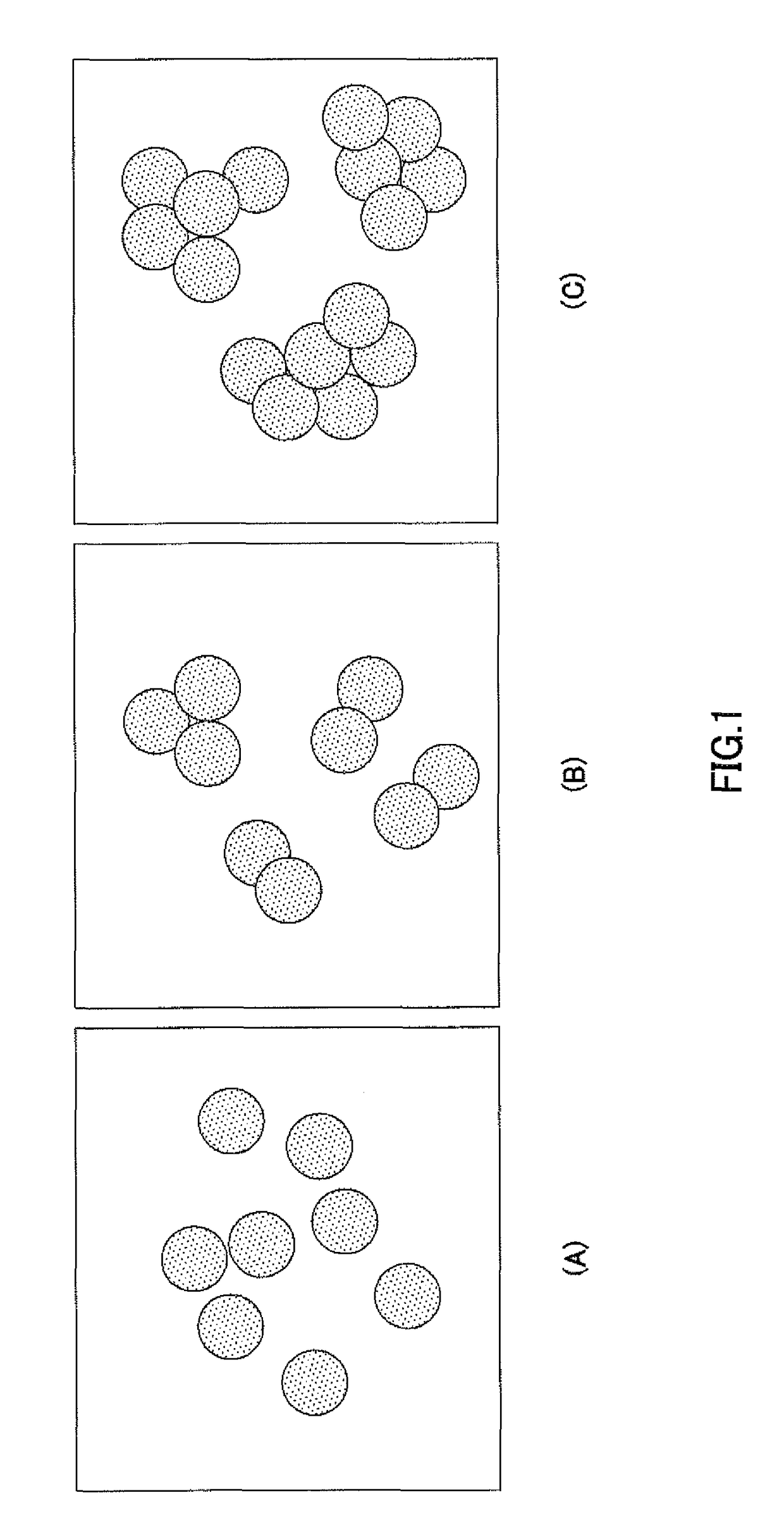Silver powder
a silver powder and powder technology, applied in the field of silver powder, can solve the problems of silver powder having a high or low viscosity, difficult to efficiently knead paste by a three-roll mill, silver powder having a high viscosity is difficult to knead smoothly with other components, etc., to prevent the occurrence of flakes, improve the kneadability and printability, and prevent the effect of viscosity chang
- Summary
- Abstract
- Description
- Claims
- Application Information
AI Technical Summary
Benefits of technology
Problems solved by technology
Method used
Image
Examples
example 1
[0117]While being agitated, 2492 g of silver chloride (manufactured by Sumitomo Metal Mining Co., Ltd., 1876 g of silver contained in the silver chloride) was fed into 36 L of 25% aqueous ammonia maintained at a liquid temperature of 36° C. in a warm bath having a temperature of 38° C., whereby a silver complex solution was prepared. A defoaming agent (ADEKANOL LG-126, manufactured by ADEKA Corporation) was diluted 100 times at a volume ratio, and 24.4 ml of this diluted solution of the defoaming agent was added to the foregoing silver complex solution, and the obtained silver complex solution was maintained at a temperature of 36° C. in a warm bath.
[0118]On the other hand, 1068 g of ascorbic acid (a reagent, manufactured by KANTO CHEMICAL Co., Inc., 56.9% by mass with respect to the silver particles) as a reducing agent was dissolved in 13.56 L of pure water having a temperature of 36° C., whereby a reducing agent solution was prepared. Next, a 160 g aliquot of polyvinyl alcohol (P...
example 2
[0129]In Example 2, a silver powder was obtained and evaluated in the same manner as in Example 1, except that the addition amount of polyvinyl alcohol as a water soluble polymer was 66 g (3.5% by mass with respect to silver).
[0130]Silver particles obtained were evaluated in the same manner as in Example 1. During the kneading by the three-roll mill, the occurrence of flakes was not visually observed, and rolling properties were good. Table 1 shows the mean primary-particle diameter DS, the specific surface area SAB, the specific surface area ratio SAB / SAS, the degree of aggregation, the degree of aggregation after application of a load of 100 N / cm2, the compressibilities at the time of application of loads of 34 N / cm2 and 113 N / cm2, the D2 / D1, and the η2 / η1.
example 3
[0131]In Example 3, a silver powder was obtained and evaluated in the same manner as in Example 1, except that the addition amount of polyvinyl alcohol as a water soluble polymer was 230 g (12% by mass with respect to silver).
[0132]Silver particles obtained were evaluated in the same manner as in Example 1. During the kneading by the three-roll mill, the occurrence of flakes was not visually observed, and rolling properties were good. Table 1 shows the mean primary-particle diameter DS, the specific surface area SAB, the specific surface area ratio SAB / SAS, the degree of aggregation, the degree of aggregation after application of a load of 100 N / cm2, the compressibilities at the time of application of loads of 34 N / cm2 and 113 N / cm2, the D2 / D1, and the η2 / η1.
PUM
| Property | Measurement | Unit |
|---|---|---|
| shear stress | aaaaa | aaaaa |
| shear stress | aaaaa | aaaaa |
| temperature | aaaaa | aaaaa |
Abstract
Description
Claims
Application Information
 Login to View More
Login to View More - R&D
- Intellectual Property
- Life Sciences
- Materials
- Tech Scout
- Unparalleled Data Quality
- Higher Quality Content
- 60% Fewer Hallucinations
Browse by: Latest US Patents, China's latest patents, Technical Efficacy Thesaurus, Application Domain, Technology Topic, Popular Technical Reports.
© 2025 PatSnap. All rights reserved.Legal|Privacy policy|Modern Slavery Act Transparency Statement|Sitemap|About US| Contact US: help@patsnap.com


